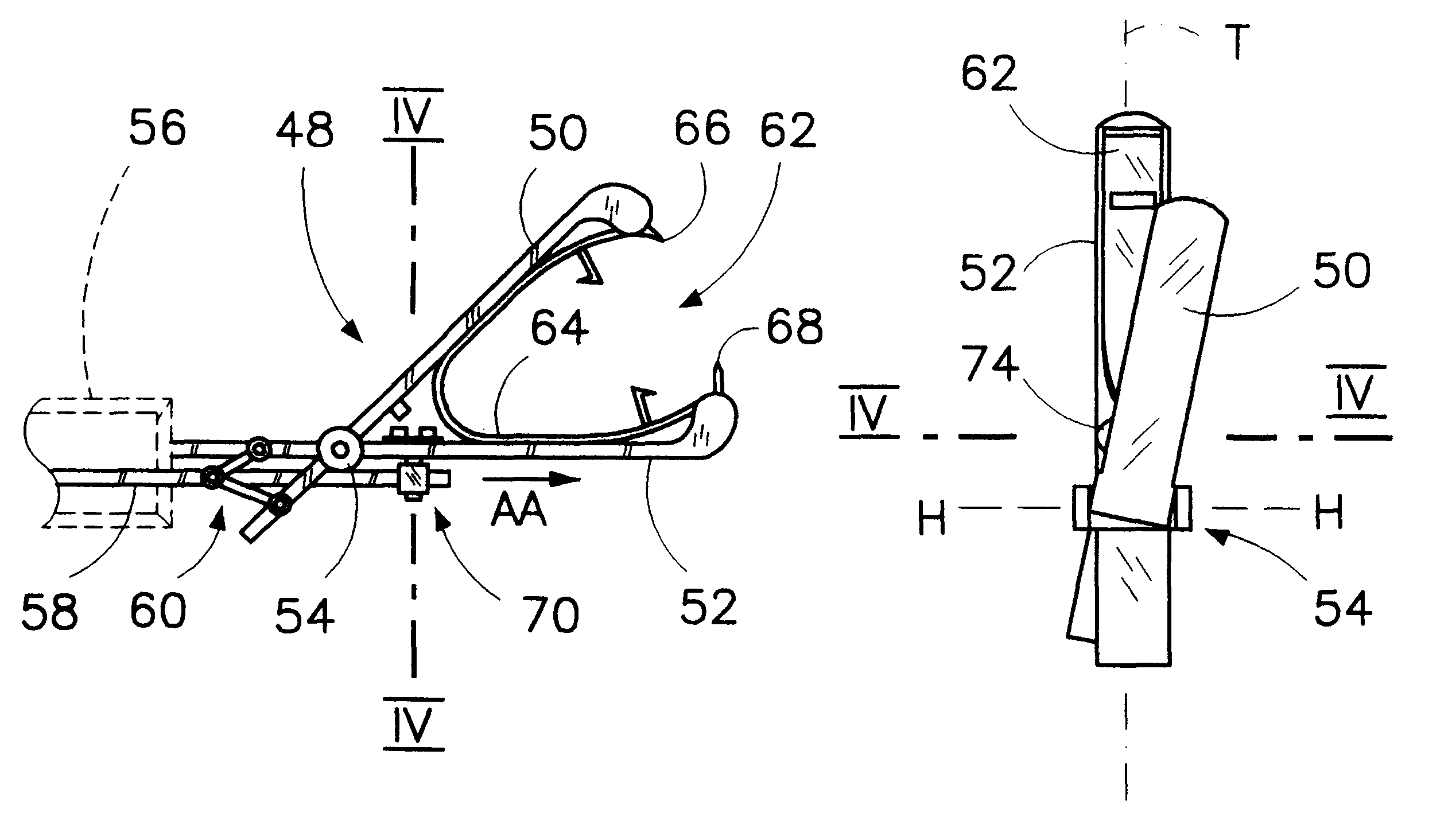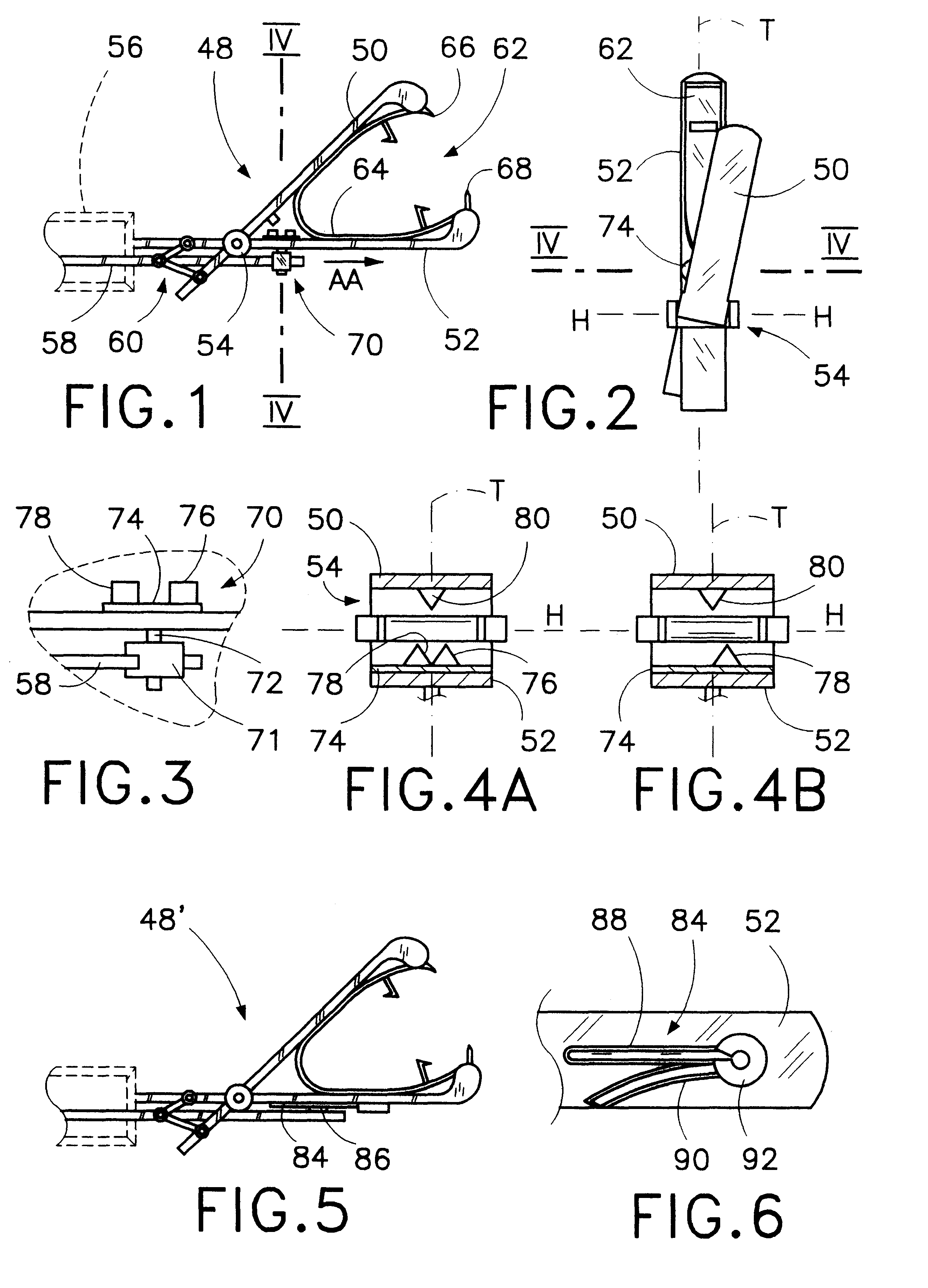Off-set clamp mechanism and associated method for minimally invasive surgery
- Summary
- Abstract
- Description
- Claims
- Application Information
AI Technical Summary
Benefits of technology
Problems solved by technology
Method used
Image
Examples
first embodiment
an instrument for setting a self-locking surgical clamp or fastener, as shown in FIG. 1, includes a clamping mechanism 48 at a distal end thereof (not designated), comprising an upper jaw 50 and a lower jaw 52 joined at a hinge or pivot point 54. The lower jaw is joined to a rigid elongate sheath 56 which in turn substantially houses a drive rod 58. Drive rod 58 actuates an opening and closing motion of the jaws from a proximal end (not shown) of the instrument. A linkage 60 joins the drive rod to jaws 50, 52 on a proximal side of hinge 54, and is designed to urge the jaws into a open configuration when rod 58 is pushed in a distal direction AA, or alternatively draw the jaws into a closed configuration when the rod is withdrawn in a proximal direction opposite to direction AA, as indicated in FIG. 1.
Hinge 54 is designed with mechanical tolerances in order to permit a full range of rotation of the jaws about a hinge or primary axis H (FIG. 2), and a limited degree of secondary rotat...
second embodiment
A second embodiment of an instrument for setting a self-locking surgical clamp or fastener is shown in FIGS. 5 and 6. Clamping mechanism 48' is structurally similar to mechanism 48, with an elimination of ratcheting device 71, shaft 72, camming wheel 74 and tooth 80. Instead, a camming effect is achieved by a camming track 84, which engages a vertical pin or projection 86 mounted on drive rod 58. Camming track 84 is in turn comprised of a straight branch 88 and a curved branch 90, which branches meet in a ratcheting device 92. Ratcheting device 92 redirects pin 86 alternatively down the straight branch 88 and down the curved branch 90 upon each distally extreme movement of the pin, in a filly opened configuration of the jaws. Upon an engagement of curved branch 90, a resulting deflection of drive rod 58 is communicated to a proximal end 94 of the upper jaw through a modified linkage 60'. Linkage 60' enjoys an enhanced degree of mechanical tolerance relative to linkage 60, allowing a...
PUM
 Login to View More
Login to View More Abstract
Description
Claims
Application Information
 Login to View More
Login to View More - R&D
- Intellectual Property
- Life Sciences
- Materials
- Tech Scout
- Unparalleled Data Quality
- Higher Quality Content
- 60% Fewer Hallucinations
Browse by: Latest US Patents, China's latest patents, Technical Efficacy Thesaurus, Application Domain, Technology Topic, Popular Technical Reports.
© 2025 PatSnap. All rights reserved.Legal|Privacy policy|Modern Slavery Act Transparency Statement|Sitemap|About US| Contact US: help@patsnap.com


